Here’s a look into the process of writing Two Suitcases:
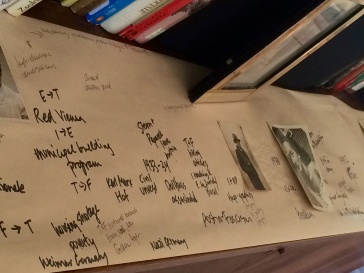
This is one of several timelines I’m using to structure the book. This one was meant to have historical events at the bottom, events and pictures from my parents’ and their friends’ lives in the middle, and trends at the top, but it’s pretty mixed already. It was a good plan anyhow.
These are pages from my aunt’s passport, issued in German-occupied Vienna in 1938.
And here are a couple of less distressing shots:
And, as promised, a snippet of what I’m working on now. This is yesterday’s work, in more or less first draft.
April 22, 1929
The University of Vienna, Ringstrasse
Anna hurries out of her first afternoon class, Dr. Charlotte Buhler on Child Development. After experimenting with sitting on three different benches, she settles on the second, and, with her book bag on her lap, she looks first to the right, and then to the left, and then to the right again. It’s her intention to keep an eye on the door she expects Emil to emerge from momentarily, while simultaneously watching the route he is likely to take to the Konditorei where they’d first met, in case she misses him coming out.
She doesn’t have to wait long. Emil’s mop of wild hair is obvious above the group pouring out of the Mathematics building. He’s walking with someone and gesturing animatedly. What next? Should she stand up and go to him? Or hope that he notices her there on the bench? The courtyard is crowded and noisy now.
Anna decides she shouldn’t chance sitting, so she stands up and makes her way toward Emil across the current of chatting students, glad of her own height. Should she call out? She’ll miss him if she doesn’t. She raises her arm and is about to wave, about to call out his name, when he turns, spots her, and grins. He says something to his companion and makes his way, cross-current, to where she is.
“Hello!” he says, genuinely glad to see her. “I was hoping we’d run into each other again!”
“And I you!” she says. He’s very handsome despite the pockmarks all over his face. She hadn’t noticed them before, but it’s not such an uncommon sight. Lots of children get smallpox and most of them die. He is lucky to have survived, she thinks. Money and good doctors, that’s always a help.
“Join me for Jause, will you? I’m going to Sluka.”
“I’d love to,” says Anna, and she lets herself be drawn into the outward flow of the crowd with Emil at her side. Sluka! Not the little bakery where they met! What have I done? What kind of fool must I be to have accepted?
Konditorei Sluka is one of the best bakeries in the city. It is elegant, luxurious, and outrageously expensive, a place inhabited by tourists and the wealthy, even the very wealthy. The Empress Elisabeth was a regular customer! Ida knows where it is, of course, but she has never been inside – though she has looked into the window longingly many times. Frantically, she searches her mind for a reason to back out now, to decline Erich’s offer, walk away and never see him again. They are too different; they’ll never get past their class differences. She is poor. He is rich.
Before she can decide on an excuse, he turns to her and asks how she likes her coffee. With whipped cream? One teaspoon of sugar or two?
By the time they reach the Konditorei, Emil and Anna have discussed their mutual enjoyment of good coffee, pastry, and the cinema, as well as establishing the comforting fact that they are both Jews.
Once in the bakery, however, her problems begin. Ida has no money. She could allow Emil pay for a small cup of coffee, but it’s much too soon in their acquaintance to let him buy her pastry.
Anna turns and looks around the Konditorei. High windows draped in sheer curtains fill the dining area with light. Glistening chandeliers in several sizes hang from the lofty ceiling. The walls are deep yellow with gold trim and pale green panels framed in rich brown. Elegantly dressed ladies and gentlemen sit at highly polished round tables cutting their pastries with forks and knives. The chairs have graceful bent wood backs and legs so delicate Ida wonders how people dare to sit on them.
She takes a deep breath.
The pastry case in front of them radiates golden light. Ornately decorated pastries and cakes satisfy every visceral sense: moist cream fillings, bright fruit slices shimmering in fruity glazes atop voluminous cakes, crispy puff pastry layers surrounding vanilla scented creams, soft nut tortes offering only a fleetingly crunchy resistance to the bite while rewarding one’s every nutty desire, unctuously melt-in-the mouth coffee butter creams topped with crunch.
“So,” asks Emil, “What is your favorite?”

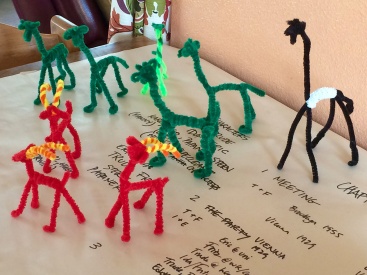
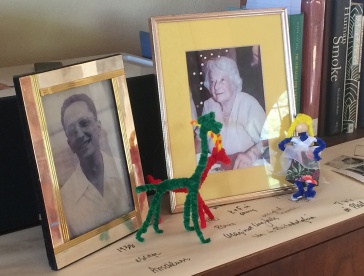
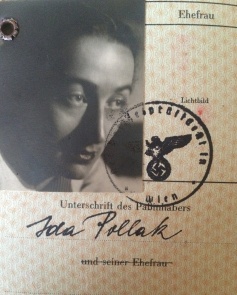
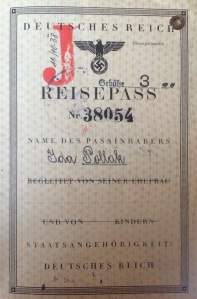

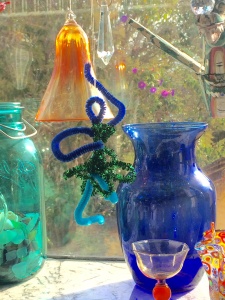
Thank you for including me in your adventure! I’m looking forward to the installment.
Namaste
You really took me to Vienna. My mouth watered at the pastry descriptions. I anxiously await the next installment.
Lone those viennese pastry shops!
There’s lots more of that to come. Tom has been describing the most incredible pastries to me!
So beautifully written, Eve! This will certainly be one of my favorite books ever!